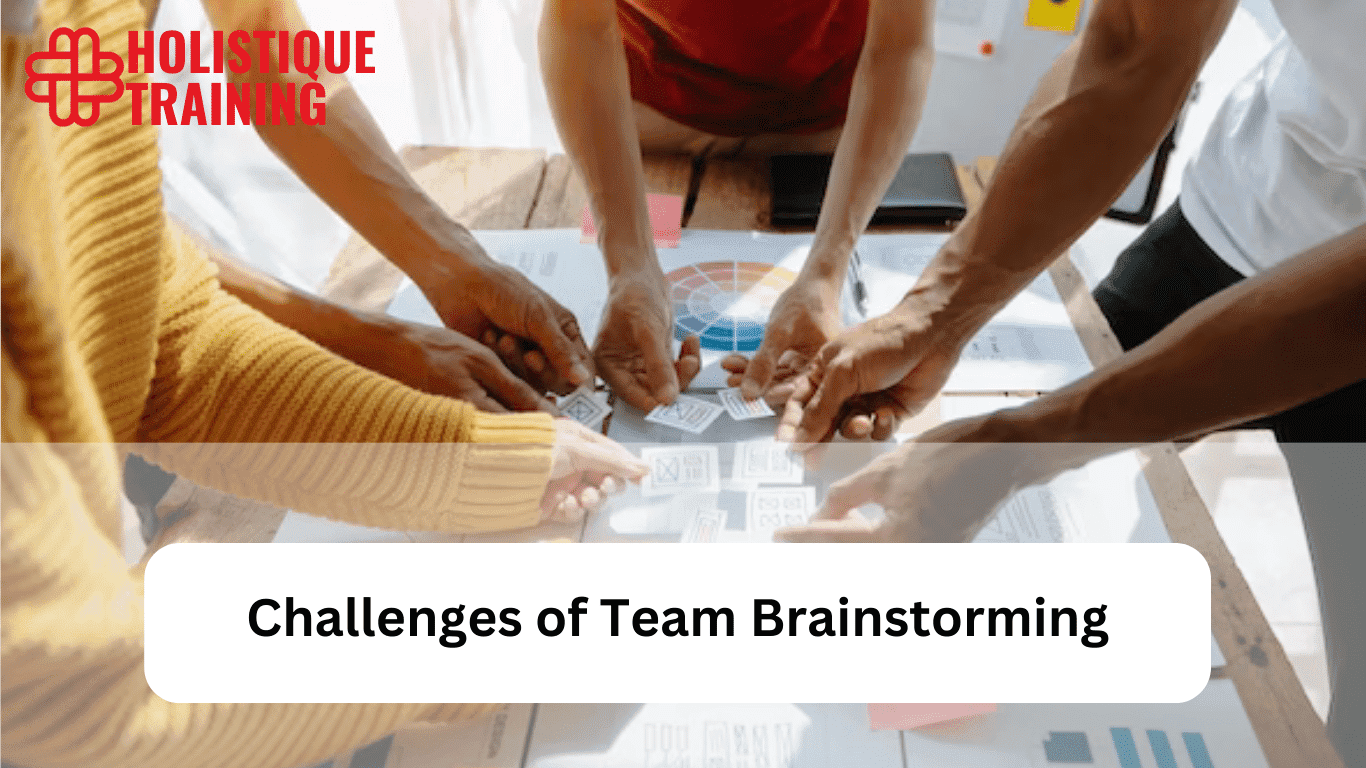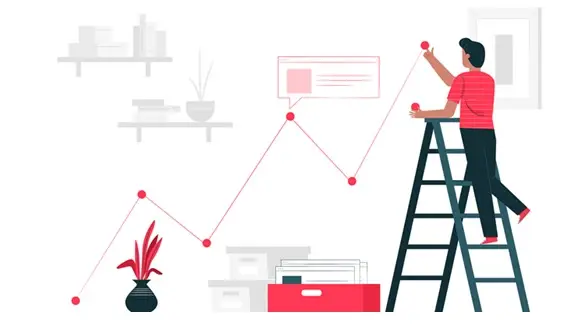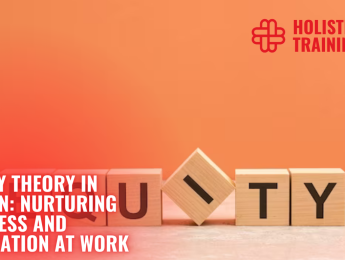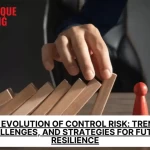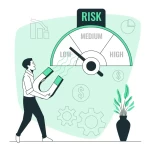In a world where innovation drives success, the ability to generate fresh and groundbreaking ideas is a skill that's highly valued. Whether you're an entrepreneur looking to develop a new product, a marketer seeking a captivating campaign idea, or a writer searching for that elusive plot twist, mastering the art of brainstorming can make all the difference. In this article, we will delve into the realm of brainstorming, exploring its history, the challenges it poses, its significance in a team setting, and most importantly, unveil ten exceptional brainstorming techniques to supercharge your creative process.
What Is Brainstorming?
Brainstorming is a structured technique used to generate a plethora of ideas, often with the aim of solving a problem or sparking innovation. The core principle of brainstorming lies in its inclusivity: it encourages participants to contribute freely, without judgement, fostering an environment where creativity can thrive.
The History of Brainstorming
The concept of brainstorming has traversed a fascinating historical journey, transforming from a mere idea into a creative revolution that influences diverse fields of endeavour. To truly appreciate its significance, we must delve into the roots of this innovative practice.
Early Seeds of Creative Collaboration
The origins of brainstorming can be traced back to the early 20th century, a time when the world was undergoing rapid industrialisation and creative ideas were in high demand. It was during this era that advertising executive Alex Faickney Osborn began experimenting with unconventional methods to enhance the creative output of his team.
The Birth of Brainstorming
In 1953, Osborn formalised his thoughts on creative collaboration in his groundbreaking book, "Applied Imagination." In this seminal work, he introduced the term "brainstorming," describing it as a structured approach to idea generation. Osborn believed that by harnessing the collective thinking power of a group, more ideas could be generated compared to solitary brainstorming. His methodology centred around creating an inclusive environment where participants could contribute freely, without fear of judgement, thus stimulating a flow of innovative ideas.
The Spread of Osborn's Ideas
Osborn's ideas gained swift traction, not just in the advertising industry where he initially applied them, but across various sectors hungry for innovation. Brainstorming became a beacon for creative professionals seeking new ways to tackle problems and generate inventive solutions. The method's simplicity and effectiveness made it a valuable tool in fields ranging from product design and technology to scientific research and education.
Brainstorming's Influence on Creativity Studies
The popularity of brainstorming also caught the attention of psychologists and researchers interested in understanding the intricacies of human creativity. Studies examining the dynamics of group creativity and the psychological underpinnings of brainstorming techniques emerged, further enhancing our comprehension of this collaborative process.
The Ongoing Evolution
Over the years, brainstorming has not remained stagnant. It has evolved in response to advancements in technology and changes in the way people collaborate. The emergence of digital platforms and virtual collaboration tools has transformed brainstorming into a globally accessible practice. Today, teams can connect and ideate in real-time, transcending geographical boundaries and time zones.
The Legacy of Osborn's Brainchild
Osborn's brainchild, brainstorming, stands as a testament to the power of collective creativity. It has become more than just a method; it represents a philosophy of inclusivity and open-mindedness. Brainstorming has influenced organisational cultures, fostering environments where diverse ideas are celebrated and individuals are empowered to voice their thoughts fearlessly.
Brainstorming in the Digital Age
As we step further into the digital age, brainstorming continues to evolve. Artificial Intelligence (AI) and machine learning algorithms are being integrated into brainstorming tools, providing teams with intelligent suggestions and enhancing the ideation process. Virtual Reality (VR) is shaping the future of brainstorming by offering immersive environments where participants can collaborate in three-dimensional spaces, enhancing creativity through enhanced visualisation and interaction.
In essence, the history of brainstorming is a chronicle of human ingenuity and collaborative spirit. From its humble beginnings as a concept in the mind of Alex Faickney Osborn to its current status as a cornerstone of innovation, brainstorming has demonstrated its enduring relevance and adaptability. Its journey reflects our ceaseless quest for creative solutions and our unwavering belief in the power of collective imagination.
Challenges of Team Brainstorming
While team brainstorming can be immensely rewarding, it's not without its challenges. These challenges can hinder the process and effectiveness of idea generation, necessitating careful consideration and mitigation.
Dominance of Voices
In a group setting, there's a risk that certain individuals with strong personalities might dominate the conversation. This dominance can stifle the contributions of quieter team members, limiting the diversity of ideas generated.
Table 1: Strategies to Counter Dominance of Voices
Groupthink
Groupthink is a phenomenon where the desire for consensus and harmony within a group overrides the exploration of alternative ideas. This can lead to conformity and prevent the emergence of truly innovative solutions.
Table 2: Strategies to Combat Groupthink
Social Pressure
People might feel hesitant to express unconventional or "out-of-the-box" ideas due to a fear of judgement from their peers. The desire to fit in and avoid criticism can restrict the generation of novel ideas.
Table 3: Strategies to Alleviate Social Pressure
Lack of Structured Process
Without a clear and structured process, brainstorming sessions can become chaotic and unproductive. This lack of structure may result in redundant ideas, tangential discussions, and a lack of focus.
A structured process can be established by using brainstorming techniques (which we will discuss later in this article) and setting specific goals for the session. Additionally, it's essential to assign roles and responsibilities to keep the session on track.
Cognitive Bias
Our brains are wired with cognitive biases that can influence the way we perceive and evaluate ideas. Confirmation bias, for instance, can make us more inclined to accept ideas that align with our existing beliefs.
Table 5: Strategies to Counter Cognitive Bias
Overemphasis on Quantity
While quantity is important, focusing solely on generating a large number of ideas can lead to a lack of depth and quality. Quality ideas might get overshadowed by sheer quantity.
To strike a balance between quantity and quality, allocate specific time intervals for idea generation and subsequent evaluation. Prioritise the most promising ideas to develop further.
Why Is Team Brainstorming Important?
In the bustling landscape of modern industries, where innovation fuels progress, the importance of team brainstorming cannot be overstated. In fact, Alex Osborn claimed that brainstorming has the potential to boost creative performance by nearly 50% when compared to individual efforts, according to Harvard Business Review. Brainstorming is not merely a group exercise in idea generation; it's a powerful catalyst that propels organisations and individuals toward groundbreaking discoveries and transformative solutions. That being said, let's delve into the profound significance of team brainstorming and explore why it stands as a cornerstone of creative excellence:
Diverse Perspectives
Teams are like a tapestry woven from diverse threads of backgrounds, experiences, and viewpoints. Each team member brings a unique set of skills, knowledge, and cultural influences to the table. This diversity serves as fertile ground for idea generation. When individuals with varied perspectives collaborate, they contribute a multitude of ideas that traverse the spectrum of creativity. The amalgamation of these diverse viewpoints often leads to the birth of ingenious solutions that a homogenous group might miss.
Synergy of Ideas
When minds collaborate, something magical transpires – the synergy of ideas. It's the phenomenon where one idea begets another, and in this chain reaction, innovation thrives. Ideas, like building blocks, interlock and combine, leading to the creation of solutions that are more profound and comprehensive than any single mind could conceive. The process of bouncing ideas off one another not only enhances the initial concepts but also triggers a chain of thought evolution, fostering a culture of continuous improvement.
Risk Mitigation
In the intricate web of problem-solving, unseen challenges often lurk. These challenges can be elusive to a solo thinker, but within the collective intelligence of a team, they stand little chance. Team brainstorming acts as a robust defence mechanism, enabling teams to identify potential pitfalls and blind spots in their ideas. The collective wisdom of the team serves as a shield, guarding against unforeseen obstacles and ensuring that the solutions devised are well-rounded and resilient.
Creativity Enhancement
Creativity is contagious. When individuals are exposed to diverse ideas, their own creative faculties are ignited. Team brainstorming sessions serve as a fertile ground where sparks of creativity leap from one mind to another, igniting a cascade of innovation. A single idea, no matter how small, can trigger a whirlwind of creative thoughts within the team, leading to the birth of concepts that are both ingenious and imaginative.
Effective Problem Solving
Complex problems rarely have straightforward solutions. They demand multifaceted approaches that can only be explored through collaboration. Team brainstorming allows for the exploration of diverse avenues, each team member bringing their unique problem-solving approach to the discussion. As ideas interweave and intertwine, a mosaic of solutions emerges. These solutions, enriched by the collective wisdom of the team, stand a far greater chance of effectively addressing the intricacies of the problem at hand.
Boosting Confidence
In the nurturing environment of a team brainstorming session, every idea finds its moment in the spotlight. When team members witness their ideas being considered and appreciated by their peers, it boosts their confidence. This positive reinforcement serves as a powerful motivator, encouraging active participation and empowering team members to take creative risks. The culture of appreciation cultivated in brainstorming sessions not only elevates individual confidence but also fosters a sense of belonging and camaraderie within the team.
Learning and Growth
Brainstorming is not just about generating ideas; it's a journey of discovery and learning. Engaging in collaborative brainstorming exposes individuals to new ideas, perspectives, and thought processes. It acts as a gateway to continuous learning and personal growth. Each brainstorming session becomes an opportunity to expand one's horizons, to step into the shoes of others, and to glean insights that contribute not only to the task at hand but also to individual development.
In essence, team brainstorming transcends the realms of mere idea generation; it becomes an embodiment of collective brilliance. It's a celebration of diversity, a fusion of thoughts, and a testament to the power of collaboration. In a world where challenges are as diverse as the people who face them, team brainstorming emerges as a beacon of hope, illuminating the path toward innovative solutions and a brighter, more creative future.
10 Brainstorming Techniques That Will Help Cultivate Great Ideas
Now that we've established the importance of effective brainstorming, let's dive into ten innovative techniques that will help you harness the collective power of your team and cultivate truly great ideas:
1. Mind Mapping
Mind mapping is an art form, a visual representation of thoughts that invites free association. It begins with a central concept, a seed from which ideas branch out like tendrils of a vine. As team members contribute, connections emerge, forming a network of ideas. This technique not only stimulates creativity but also aids in comprehending the relationships between different concepts. It's akin to exploring a rich, interconnected ecosystem of ideas, where every thought is a stepping stone to a new revelation.
2. Reverse Brainstorming
Reverse brainstorming is akin to turning a problem inside out to inspect it from unconventional angles. Instead of addressing the issue directly, participants explore ways to exacerbate it. By identifying how to worsen the situation, the underlying causes become evident, paving the way for innovative solutions. It's like unravelling a puzzle backward, discovering hidden clues that lead to unexpected breakthroughs.
3. SCAMPER
SCAMPER is an acronym that opens the door to seven diverse pathways of creativity: Substitute, Combine, Adapt, Modify, Put to another use, Eliminate, and Reverse. Each letter represents a prompt that challenges the conventional and invites innovative alterations. It's a technique that forces participants to scrutinise their ideas from seven different perspectives, ensuring no stone is left unturned in the quest for innovation.
4. Six Thinking Hats
Edward de Bono's Six Thinking Hats technique is a masterstroke in structured thinking. It assigns metaphorical hats, each with a distinct colour and perspective: neutral (white), emotional (red), critical (black), optimistic (yellow), creative (green), and process-oriented (blue). By donning these hats, participants approach the idea from multiple viewpoints. This method ensures a comprehensive analysis, encouraging creativity while maintaining a balanced focus on practicality and emotions.
5. Storyboarding
Storyboarding is the art of translating ideas into visual narratives, akin to crafting a movie plot. It breaks down concepts into scenes, allowing participants to visualise the flow and sequence of ideas. This technique not only aids in spotting gaps in the narrative but also enhances the clarity of thought. It's a technique where creativity meets visualisation, resulting in a vivid blueprint of ideas.
6. The Worst Idea Technique
Embracing the absurd, the Worst Idea Technique encourages participants to propose the most ludicrous, impractical ideas imaginable. What seems preposterous at first glance often conceals the seeds of innovation. Through creative refinement and imaginative twists, these seemingly terrible ideas metamorphose into unique and groundbreaking solutions. It's a reminder that sometimes, the most unconventional paths lead to extraordinary destinations.
7. Round-Robin Brainstorming
Round-robin brainstorming is an exercise in equality and inclusivity. In a team setting, each member contributes an idea in sequence. This method ensures that every voice is heard, preventing the domination of discussion by a few individuals. It's a technique that promotes fairness and recognises the importance of every team member's perspective. The collective contributions result in a mosaic of ideas, each fragment contributing to the whole.
8. Silent Brainstorming
In the realm of brainstorming, introverts often find their voices drowned in the sea of extroverted enthusiasm. Silent brainstorming offers a sanctuary for introverted creativity. Participants independently write down their ideas before discussion. This method eliminates the fear of judgement, allowing introverts to express their thoughts freely. The quietude of the process often births profound, contemplative ideas, enriching the brainstorming pool with diverse perspectives.
9. Random Word Stimulation
Random word stimulation is an exercise in spontaneous creativity. It involves selecting a random word seemingly unrelated to the problem at hand and challenging participants to connect it with their ideas. This unconventional association prompts the brain to explore uncharted territories, leading to unexpected and innovative solutions. It's a technique that nudges participants out of their comfort zones, encouraging them to find connections where none seem to exist.
10. Digital Brainstorming Tools
In the digital age, physical boundaries blur as virtual collaboration tools become the canvas for brainstorming endeavours. These tools transcend geographical distances, allowing teams to connect and ideate in real-time. Digital brainstorming platforms like Miro, Stormboard, MURAL, MindMeister, and Idea Board offer features such as real-time collaboration, customisable templates, and easy idea organisation. They have become indispensable companions in the realm of virtual brainstorming, fostering creativity even in the absence of physical proximity.
Each of these techniques is a gateway to boundless creativity. They are not mere strategies; they are invitations to explore the unexplored, to embrace the unconventional, and to transform ordinary ideas into extraordinary innovations. In the hands of a team willing to venture beyond the familiar, these techniques become catalysts, nurturing the seeds of innovation into blooming fields of creative brilliance.
Some of the Best Digital Brainstorming Tools
To complement the shift towards virtual collaboration, several digital tools have emerged to enhance the brainstorming experience. Here are some of the best options available:
Miro
An online collaborative whiteboard platform that enables teams to brainstorm, ideate, and organise thoughts visually.
Stormboard
A virtual sticky note tool that replicates the traditional brainstorming experience in a digital environment.
MURAL
Designed to facilitate visual collaboration, MURAL offers a range of templates and tools for interactive brainstorming sessions.
MindMeister
A cloud-based mind mapping tool that enables teams to create, share, and collaborate on mind maps in real-time.
Ideaboard
This tool focuses on remote brainstorming with virtual sticky notes, allowing teams to generate ideas and group them seamlessly.
Digital brainstorming tools offer features such as real-time collaboration, customisable templates, and the ability to save and revisit ideas easily. These platforms help bridge geographical gaps, making creative teamwork possible regardless of physical location.
How Did Team Brainstorming Change Post-COVID-19?
The unprecedented disruption caused by the COVID-19 pandemic sent shockwaves through various aspects of our lives, reshaping how we work, communicate, and collaborate. Team brainstorming, a cornerstone of creativity and innovation, was no exception to this transformative wave. As physical distancing became the norm and remote work became the standard, brainstorming had to adapt swiftly to navigate the challenges of the post-COVID-19 era.
Virtual Meetings
In the wake of the pandemic, traditional face-to-face brainstorming sessions took a back seat to virtual meetings. Video conferencing platforms emerged as lifelines, connecting team members across cities, countries, and continents. Virtual meetings not only allowed teams to convene safely but also broke down geographical barriers, enabling diverse minds from different corners of the world to collaborate seamlessly. This shift was instrumental in preserving the essence of team brainstorming despite physical distances.
Digital Collaboration Tools
The rise of digital collaboration tools marked a paradigm shift in how teams brainstormed post-COVID-19. Platforms like Miro, Stormboard, and MURAL became the digital canvases where ideas found expression. These tools replicated the essence of physical brainstorming - virtual sticky notes adorned digital whiteboards, and diverse ideas flourished in the digital realm. The real-time nature of these platforms facilitated instant feedback and idea organisation, ensuring that the creative momentum remained unhindered.
Structured Online Brainstorming Techniques
The virtual landscape prompted the refinement and introduction of structured online brainstorming techniques. With participants no longer sharing a physical space, maintaining focus became crucial. Techniques like timed brainstorming sessions, agenda-driven discussions, and facilitator-led interactions emerged as anchors, steering brainstorming sessions toward productivity. These structured approaches ensured that virtual brainstorming sessions remained purposeful, combating the potential distractions of remote work environments.
Increased Emphasis on Inclusivity and Engagement
Virtual brainstorming underscored the importance of inclusivity and engagement. In a digital setting, where non-verbal cues might be limited, active participation became paramount. Facilitators encouraged all team members to contribute, ensuring that every voice was heard. Digital platforms also introduced features like live polls and anonymous idea submission, amplifying inclusivity and allowing even introverted team members to express their creativity without inhibition. The democratisation of brainstorming sessions became a norm, nurturing a culture of equal participation.
Integration of Multimedia and Interactive Elements
The virtual canvas expanded the horizons of brainstorming by integrating multimedia and interactive elements. Teams embraced the power of multimedia presentations, infographics, videos, and interactive prototypes. These visual aids not only enhanced idea communication but also sparked creativity by engaging multiple senses. Interactive brainstorming sessions, where participants could manipulate digital elements in real-time, added a layer of dynamism, transforming brainstorming into a vibrant, immersive experience.
Global Collaboration and Diverse Perspectives
The digitalisation of brainstorming led to a phenomenon of global collaboration. Teams comprised individuals from diverse cultural backgrounds, bringing unique perspectives to the table. The amalgamation of these diverse viewpoints enriched the brainstorming process, leading to the synthesis of ideas that transcended cultural boundaries. Global collaboration became a catalyst for innovation, fostering the exchange of ideas rooted in varied experiences and worldviews.
Adaptation of Hybrid Models
As the world gradually moved toward a semblance of normalcy, hybrid models of brainstorming emerged. These models combined the best of both worlds, blending physical and virtual interactions. Hybrid brainstorming sessions allowed some team members to convene in physical spaces while incorporating remote participants via digital platforms. This hybrid approach ensured that the benefits of face-to-face interactions, such as spontaneity and interpersonal connections, coexisted with the inclusivity and accessibility of virtual collaboration.
In essence, team brainstorming post-COVID-19 became a testament to human resilience and adaptability. It showcased the capacity of creativity to thrive in challenging circumstances. As teams harnessed the power of virtual collaboration tools, structured techniques, and diverse perspectives, brainstorming sessions not only endured but flourished. The digital transformation of brainstorming marked a new chapter, one where innovation knew no physical boundaries, and the collective brilliance of teams could illuminate the darkest corners of problems, crafting solutions that were as resilient as the human spirit itself.
Conclusion
Brainstorming is an indispensable tool for cultivating creativity and driving innovation. By harnessing the power of collective thinking, individuals and teams can generate a wide array of ideas that have the potential to shape industries and change the world. Understanding the history, challenges, and importance of team brainstorming, along with adopting diverse techniques tailored to your needs, can empower you to unlock your creative potential and navigate the ever-evolving landscape of idea generation. So, the next time you find yourself in pursuit of that elusive spark of genius, remember these ten brilliant brainstorming techniques and embark on a journey of innovation like never before.
And, if you're looking to delve deeper into the world of effective process improvement and innovation, we’ve got the right course for you! Our ‘Planning for Continuous Process Improvement’ will help you gain valuable insights and practical strategies to elevate your creative thinking and problem-solving abilities. Make sure you enrol now!
Frequently Asked Questions(FAQ)
How does team brainstorming differ from individual brainstorming?
Team brainstorming involves a group's collective input, leading to diverse perspectives and synergy. Individual brainstorming is solo idea generation, often limited by one's viewpoint.
What is the significance of addressing challenges in team brainstorming?
Acknowledging challenges like groupthink, dominance of voices, and cognitive biases ensures a more effective brainstorming process, fostering innovation and preventing pitfalls.
How does the SCAMPER technique enhance idea generation?
SCAMPER prompts you to Substitute, Combine, Adapt, Modify, Put to another use, Eliminate, and Reverse aspects of your idea. This strategic approach unlocks fresh angles and fosters creativity.
Can the worst idea technique really lead to innovative solutions?
Absolutely! Encouraging the "worst" ideas often breaks mental barriers, prompting the team to refine and reshape these ideas into surprisingly innovative solutions.
Why is the transition to digital brainstorming tools important?
Post-COVID-19, remote work is common. Digital tools facilitate virtual collaboration, ensuring teams remain connected and creative, irrespective of geographical boundaries.

